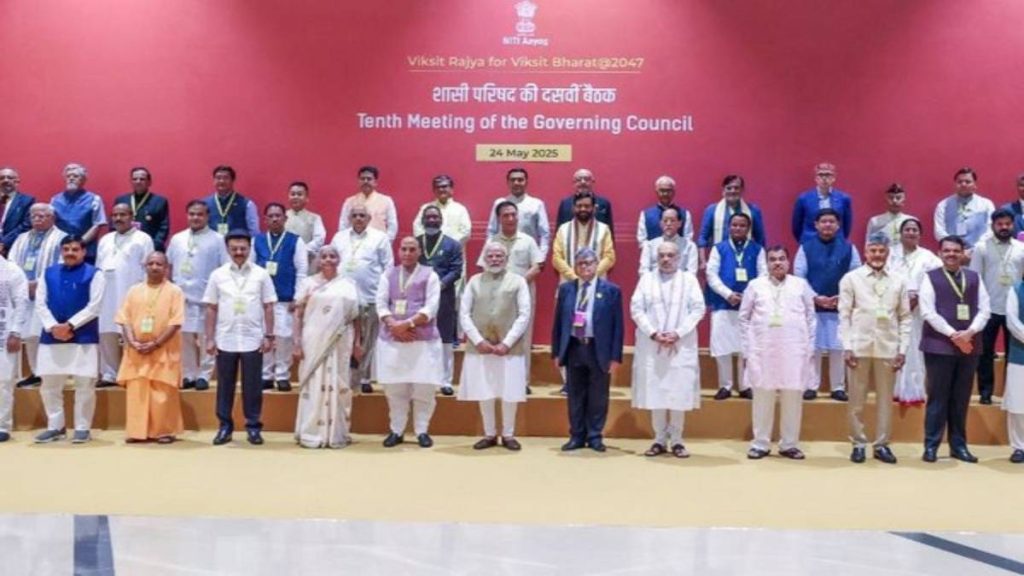At the Governing Council meeting of NITI Aayog, Prime Minister Narendra Modi called upon states to channel the collective spirit demonstrated during Operation Sindoor into building a developed India or Viksit Bharat. Drawing a parallel between the nation’s solidarity in the face of terrorism and the effort needed for rapid development, PM Modi said the “strength of Team India” must now fuel the country’s growth journey.
NITI Aayog CEO B.V.R. Subrahmanyam, briefing the media after the meeting, said the Prime Minister highlighted how the overwhelming support from citizens during Operation Sindoor must now be transformed into “social strength” to make Viksit Bharat a reality.
“The Prime Minister said that Operation Sindoor is not merely a display of military might. It reflects societal unity, and that same collective energy must now drive national development,” Subrahmanyam said. “Viksit Bharat cannot be the vision of just one leader or state — it must become a people’s movement.”
Operation Sindoor was conducted in early May as a response to the Pahalgam terror attack, targeting terrorist infrastructure in Pakistan and Pakistan-occupied Jammu & Kashmir (PoJK). The Indian Armed Forces successfully repelled Pakistani aggression and struck critical military installations. The operation drew strong bipartisan support, with unanimous commendation for the armed forces and PM Modi’s leadership.
“There was absolute unanimity and a shared sense of grief and anger over the Pahalgam attack,” Subrahmanyam said. “Every leader in the room, regardless of ideology or party, expressed solidarity and praised the valour of our forces.”
The Prime Minister also emphasized that India stands at a critical inflection point. “India is currently the fourth-largest economy, having surpassed Japan, and is expected to become the third-largest within 2.5 to 3 years,” Subrahmanyam noted. “We’re at a takeoff stage where rapid growth is possible — but it requires coordinated action.”
He pointed out that 17 states have either released or are preparing their Viksit Rajya (Developed State) vision documents, aligned with national priorities yet rooted in local realities. States such as Uttar Pradesh, Punjab, Andhra Pradesh, Tamil Nadu, and Gujarat have already unveiled their plans, and others are expected to follow by August.
The meeting’s central theme, Viksit Rajya for Viksit Bharat@2047, focused on ensuring that state-level progress forms the foundation of India’s long-term national development strategy. Sub-themes included manufacturing, services, rural and urban transformation, skilling, entrepreneurship, green growth, and easing regulatory bottlenecks.
“The Prime Minister stressed that development must be employment-centric,” Subrahmanyam added. “States must remove outdated regulations, promote ease of doing business, and focus on sectors like manufacturing and services. Skilling, innovation, and export orientation were also high on the agenda.”
PM Modi further urged states to take full advantage of India’s growing network of Free Trade Agreements (FTAs) to boost exports and create a globally competitive economy. He also encouraged healthy competition among states to create investment-friendly ecosystems.
In conclusion, the Prime Minister reiterated that when the Centre and states work together as “Team India,” no goal is beyond reach — including the ambitious vision of transforming India into a developed nation by 2047.
